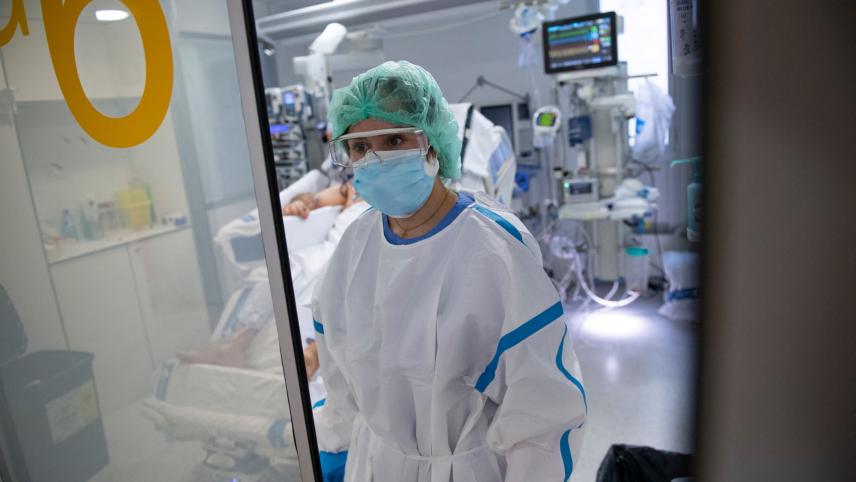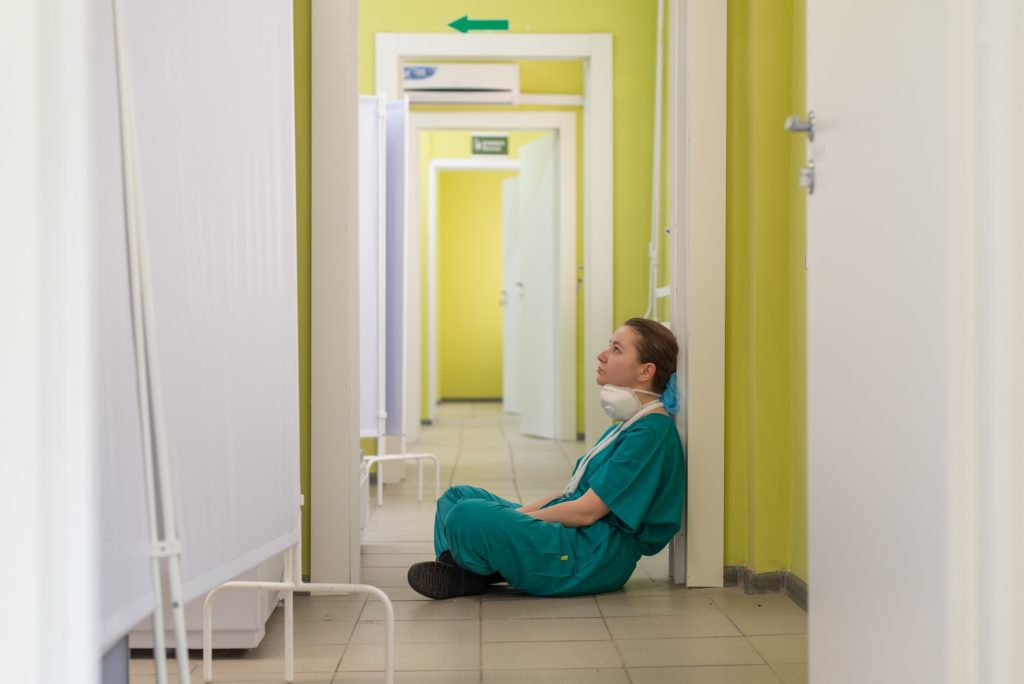The number of coronavirus infections, hospitalisations, as well the number of deaths, are rising in Belgium, resulting in increased pressure on certain hospitals.
Between 8 and 14 March, an average of 8,614 new coronavirus infections were identified every day, a 24% increase on the previous seven days, according to the figures published by the Sciensano Public Health Institute on Friday morning.
The Omicron BA.2 variant is accounting for almost 76% of all cases, while the Delta variant has completely disappeared in the country.
The average number of PCR tests taken per day in the same period inclined by 7% to 35,208.4. The positivity rate now sits at 26%, meaning more than a quarter of all tests has a positive result.
During the same week, an average of 21.4 Covid-19 patients died on a daily basis, up by 26% since last week. The total number of deaths in Belgium since the start of the pandemic amounts to 30,510.
This figure also includes people who died of another cause of death, but who happened to be infected, meaning they are an overestimate of the deaths caused by the virus.
Virologist Marc Van Ranst said this rise in figures indicated the start of a new (small) wave of infections and added that while the healthcare system is no longer under the extreme pressure it was at the end of last year, "the situation in hospitals is still not comfortable."
Hospitalisations increasing
Between 11 and 17 March, an average of 163.3 patients suffering from Covid-19 were admitted to hospitals each day – an increase of 14% on the seven days previous.
This number reflects how many people end up in hospital specifically because of the virus, not those who are admitted with another condition and then test positive for the coronavirus.

Credit: Belga
On Thursday, a total of 2,262 people were in Belgian hospitals due to an infection, 100 more than on Wednesday, of whom 173 were being treated in intensive care (-4). This number covers all patients who tested positive for Covid-19, including those who were first admitted with a different condition.
Virologists have said the fact that the number of intensive care patients continues to drop is positive, however, this rise in hospitalisations, alongside the spread of the flu in Belgium, is resulting in several hospitals being under pressure and having to postpone non-urgent care.
Reproduction rate, incidence, and total vaccinations
The reproduction rate (Rt) now sits at 1.09. This figure represents the average number of people that contract the virus from each infected person. When it is above 1, it means that the epidemic is gaining ground in Belgium.
The incidence (the number of new cases per 100,000 inhabitants) has once again started to rise rapidly and now sits at 945 over the past 14 days.
Related News
As of Tuesday, more than 9.11 million people are fully vaccinated – 89% of Belgium's adult population and 79% of the total population.
Meanwhile, almost 7.07 million people have received a booster dose of a coronavirus vaccine, representing 75% of over-18s and 61% of the entire population. The majority of adults should have had the opportunity to get a booster dose by March 2022.
While neighbouring France and the UK are already giving people a fourth vaccine dose, Belgium has said it will not extend fourth doses beyond those with reduced immunity for the time being as there is too little scientific evidence to justify a fourth shot for the general population.

